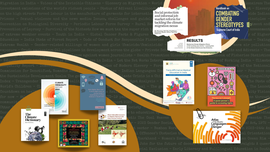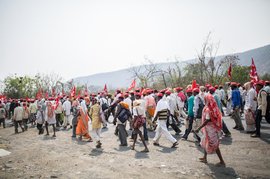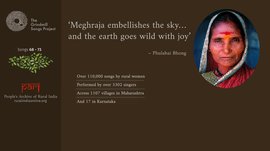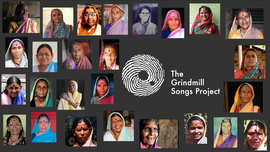Our FACES project aims to map the facial and occupational diversity of our country. It is a meticulously gathered and maintained district and village-level database of people’s faces and livelihoods, now running into thousands.

Samir Pathak is a retired postman from Birbhum, West Bengal
This year FACES has ventured into 53 new blocks. In Dubrajpur block of Birbhum district in West Bengal, for instance, where our contributor met Samir Pathak , a retired postman. We also added people from the following Adivasi communities: Kanikkar, Malhar, Koli, Paniyan, Kattunayakan, Malai Arayan, Adiyan and Bodo.
Initially
many students took to the project as a way to connect with and document rural
India through photographs. Over
the years, our contributors – the majority of whom continue to be students –
have photographed people from different blocks of different districts across
the country.
Faces
aims to document portraits of at least one adult male, one
adult female and one child or adolescent from each block of every district of a
state. Beyond
rural India, this project documents the faces of migrant labourers in urban
settings as well.
Meet Sumangala , one of the four coir workers from the Haripad block of Alappuzha district in Kerala – one of the new occupations featured in Faces this year. The details about her tell us that women are not just homemakers in rural India – they work in the fields, sell fish and vegetables, stitch, weave and knit. In short, they are multitaskers.


Left: Sumangala is a coir worker from Alappuzha, Kerala. Left: Nobika Khasain is a student and traditional Khasi dancer from Meghalaya
With students being the majority of contributors, it comes as no surprise that this year, students have been the most-featured in Faces.
From Mawphlang block (another first this year) in the East Khasi Hills of Meghalaya, we meet Nobika Khasain , a student of Class 9 and a traditional Khasi dancer. “I love dressing up in our traditional clothes," says Nobika, "even if it takes time to set up before every dance [performance]."
If the work we do interests you and you would like to contribute to PARI, please write to us at [email protected]. We welcome freelance and independent writers, reporters, photographers, film makers, translators, editors, illustrators, teachers and researchers to work with us.
PARI is a not-for-profit and we rely on donations from people who appreciate our multilingual online journal and archive. If you would like to donate to PARI, please click on DONATE .




